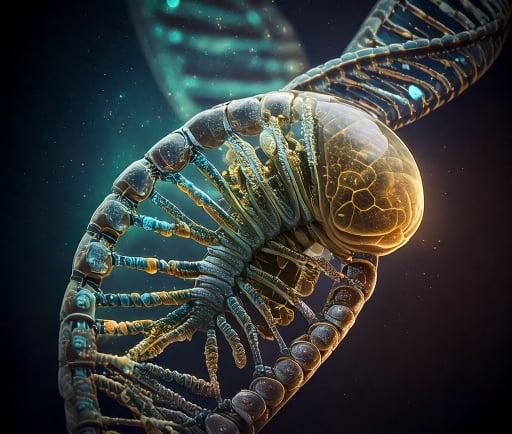Harnessing Tardigrade DNA: A Breakthrough in Radiation Resistance


Introduction to Tardigrades and Their Unique Resilience
Tardigrades, commonly referred to as water bears, are microscopic organisms renowned for their extraordinary resilience. These diminutive creatures can survive extreme conditions such as high radiation, extreme temperatures, and even the vacuum of space. Their remarkable durability has spurred scientific interest, particularly regarding the potential applications of their biology in enhancing human resilience to radiation. One of the most significant discoveries in this realm is the identification of the Dsup gene, which plays a vital role in protecting tardigrades from radiation-induced damage.
The Role of Dsup Gene in Radiation Resistance
The Dsup gene, or damage suppression gene, has been shown to mitigate cellular stress and protect cellular machinery from the harmful effects of ionizing radiation. Researchers have begun to explore the implications of inserting this gene into human stem cells to bolster their resistance to radiation. The prospect of enhancing human cells with tardigrade DNA presents a groundbreaking approach to improving radioprotection for individuals exposed to high radiation environments, such as astronauts or patients undergoing radiation therapy.
Implications for the Future of Radiation Protection
The insertion of the Dsup gene into human cells opens a plethora of possibilities in the fields of medicine, space exploration, and emergency response. This novel genetic modification could yield stem cells capable of withstanding substantial radiation exposure, thereby reducing the risks associated with radiation-related illnesses. Such advancements may significantly improve therapeutic outcomes for cancer patients receiving radiation treatment, as well as safeguard astronauts on long-duration space missions where exposure to cosmic radiation is a concern.
Moreover, understanding how tardigrade DNA can enhance human resilience invites further investigation into other genetic adaptations that could be beneficial. The continued exploration into genetic engineering, particularly the integration of unique attributes from resilient organisms like tardigrades, may lead to innovative solutions that revolutionize how humanity adapts to extreme environments.
Conclusion
Incorporating tardigrade DNA into human cells represents a remarkable stride towards developing advanced radiation resistance techniques. The Dsup gene’s ability to protect against radiation damage highlights the potential for biotechnological applications that could redefine treatments and preventive measures in various sectors. This intersection of biology and technology lays the groundwork for significant advancements in our capacity to withstand environmental challenges, paving the way for a new era of resilience.
